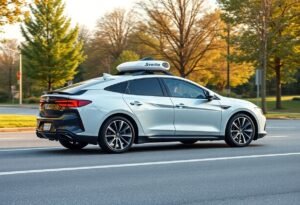Autonomous vehicles are revolutionizing the transportation landscape, leading to unprecedented innovations in how we move goods and people. As these technologies evolve, they promise to create safer, more efficient travel solutions while significantly impacting urban planning and reducing environmental footprints.
The rise of autonomous vehicles in modern transportation
The emergence of autonomous vehicles is reshaping the transportation ecosystem. These self-driving vehicles leverage advanced technologies such as artificial intelligence, machine learning, and extensive sensor systems that enable them to navigate roads with minimal human intervention. This transition risks transforming local economies by improving logistics and mobility. For instance, companies like Tesla and Waymo are at the forefront, developing cars that can drive autonomously in various environments. This movement towards automation is promising to enhance safety and reduce traffic congestion, leading to a more sustainable urban environment.
Innovative technologies driving autonomy
Central to the effectiveness of autonomous vehicles are the innovations that have facilitated their development. Key technologies include LIDAR, radar, and computer vision, allowing vehicles to interpret their surroundings accurately. These innovations rely on vast amounts of data processed in real-time, leading to smart navigation and decision-making capabilities. Furthermore, advancements in connectivity, such as V2X (vehicle-to-everything) communication, ensure that vehicles can share information with each other and surrounding infrastructure, enhancing overall safety and performance on the road.
The impact on urban planning and infrastructure
The widespread adoption of self-driving cars is expected to influence urban planning significantly. With autonomous vehicles potentially decreasing the need for extensive parking facilities, cities can repurpose these spaces for parks, community centers, or affordable housing. Moreover, traffic patterns will also change, leading city planners to rethink existing roads and public transit systems. This innovation facilitates smarter cities that prioritize sustainability and livability, promoting walking and cycling over traditional vehicular traffic.
Safety and regulatory challenges
Despite the potential benefits, the transition to full autonomy comes with challenges, especially concerning safety and regulation. Statistics show that autonomous driving technology could reduce traffic accidents significantly, yet incidents involving driverless cars underline the need for stringent regulations. Governments are tasked with developing appropriate guidelines ensuring these vehicles are safe for public use. Collaborations between tech companies, regulatory bodies, and policymakers are crucial in drafting laws that embrace innovation while keeping public safety as the top priority.
Environmental sustainability benefits
Autonomous vehicles hold promise for promoting environmental sustainability. By optimizing driving patterns, these vehicles can lead to reduced fuel consumption and lower emissions. As electric vehicles increasingly become part of this landscape, the potential for a significant decrease in greenhouse gas emissions becomes a reality. Furthermore, transportation systems integrating autonomous vehicles can minimize travel times and promote car-sharing, contributing to a decrease in the overall number of cars on the road.
Future outlook and societal implications
The future of transportation is undoubtedly intertwined with the advances in autonomous vehicle technology. As societies adapt to this transformative innovation, multiple implications arise, from job displacement in traditional sectors like trucking to new opportunities in tech-driven fields. The increasing comfort with automation may also change public perception, leading to broader acceptance and integration of technology into daily life. It is essential to ensure that these transitions are managed judiciously, with social equity considered in the actualization of autonomous transport solutions.
Disclaimer: This article is for informational purposes only and does not constitute professional advice.





















